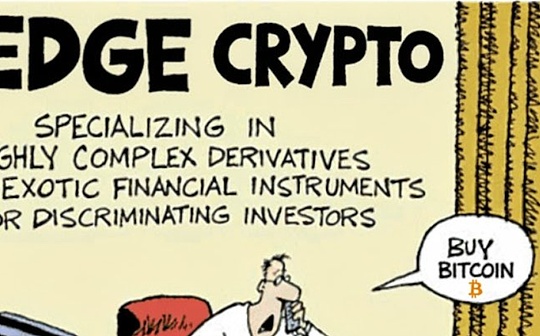
Author: danny; Source: X, @agintender
With the issuance of new-generation cryptocurrencies such as Monad, MMT, and MegaETH, a large number of retail investors participating in new investments face a common problem:How to secure high paper profits?
The general hedging strategy is to open a short position of equal value in the contract market after obtaining the spot price to lock in profits.However, this strategy often becomes a “trap” for retail investors in new currencies.Since the liquidity of new currency contracts is poor and there are a large number of chips to be unlocked in the market, “interested parties” can use high leverage, high funding rates and precise pull orders to force retail investors to close their short positions and return their profits to zero.For retail investors who lack bargaining power and OTC channels, this is almost an unsolvable game.
Faced with the banker’s attacks, retail investors must give up the traditional 100% accurate hedging and instead adoptDecentralized, low leverageDefense strategies: (from thinking about managing profits to thinking about managing risks)
Hedging across exchanges: in aOpen short positions on exchanges with good liquidity(as the primary locking bit) while on anotherOpen long positions on illiquid exchanges(As a liquidation cushion).This kind of “cross-market hedging” greatly increases the cost and difficulty of banker sniping, and at the same time, it can take advantage of the differences in funding rates between different exchanges for arbitrage.
In the extremely high volatility environment of new coins, any strategy involving leverage carries risks.The ultimate victory for retail investors lies in taking multiple defensive measures to transform the risk of liquidation from a “deterministic event” into a “cost event” until they can safely exit the market.
1. New realistic dilemma for retail investors – no profit if not hedging, hedging will be attacked
In actual new scenarios, there are two main “timing” dilemmas faced by retail investors:
-
Futures Hedging (Pre-Launch Hedging): What retail investors get before the market opens isFutures TokenorLock share certificate, rather than spot.At this time, there are already contracts (or IOU certificates) in the market, but the spot is not yet in circulation.
-
Post-Launch Restrictions: Although the spot has entered the wallet, it is limited byWithdrawal/transfer time restrictions, extremely poor spot market liquidity, or exchange system congestion, cannot be sold immediately and efficiently
Let me tell you something: as early as October 2023, Binance had a similar spot pre market product for everyone to do spot hedging, but it may have needed launchpool or the data was not good, so it suspended it (the first target at that time was Scroll). In fact, this product can solve the problem of pre-market hedging very well, which is a pity ~
So this market version will appear, the futures hedging strategy – that is, traders expect to get the spot, go to the contract market to open a short position at a higher than expected price to lock in profits
Remember: the purpose of hedging is to lock in profits, but the key is to manage risks; when necessary, part of the profits should be sacrificed to ensure the safety of the position.
The key point of hedging: only open short positions at high-yield prices
For example, if your ICO price is 0.1, and the current price in the contract market is 1, which is 10x, then the “risk” of opening a short position is more cost-effective. First, it locks in a 9x return, and second, the manipulator’s cost of pushing it up is also relatively high.
But in practice, many people blindly open short positions for hedging without looking at the opening price (assuming the expected return is 20%, there is really no need)
The difficulty of pulling FDV from 1 billion to 1.5 billion is much greater than that from FDV 500 million to 1 billion, although both are pulling in 500 million in absolute terms.
Then the question comes, because the current market liquidity is not good, so even if you open a short position, you may still be sniped, so what should we do?
2. Upgraded version of hedging strategy – chain hedging
Putting aside the more complicated calculations of the beta and alpha of the target, and the correlation with other mainstream currencies for hedging, I hereby propose a relatively easy-to-understand “hedging after hedging” (serial hedging?!) strategy
In a nutshell, it is to add one more hedge to the hedging position. That is, when opening a short position for hedging, you will also choose an opportunity to open a long position to prevent the main short position from being liquidated.Sacrifice certain benefits in exchange for a safe boundary
Note: It cannot 100% solve the liquidation problem, but it can reduce the risk of being sniped by market makers on specific exchanges, and at the same time, it can also use capital rates for arbitrage (the premise is that 1. Stop loss and stop profit points must be set; 2. The price of opening a position is cost-effective; 3. Hedging is a strategy, not a belief, and there is no need to follow it to death)
Where exactly should I open a short position?Where to open a long position?
3. Re-hedging strategy based on liquidity differences
Core idea: Use liquidity differences for position hedging
On exchanges with good liquidity and more stable pre-market mechanisms – open short positions, taking advantage of its large depth, the bookmaker needs to invest more funds to sell short orders.This greatly increases the cost of sniping as a major profit locking position;
Open a long position on an exchange with poor liquidity and high volatility to hedge A’s short position, if A is violently pulled up, B’s long orders will rise accordingly, making up for A’s losses.Exchanges with poor liquidity are more likely to experience sharp increases.If the prices of A and B are synchronized, long orders on exchange B will make a quick profit.Any potential losses from the short order on exchange A can be covered.
4. Calculation of re-hedging strategy
Assume an ABC spot of 10,000.Assume ABC is worth $1.
-
short position: Exchange A (Stable) $10,000
-
Long position: Exchange B (poor liquidity) $3,300 (for example, ⅓, this value can be inferred from the expected return)
-
Spot: 10,000 ABC worth $10,000
Scenario A. Price surges (banker pulls the market)
-
ABC Spot: Increase in value.
-
A short order on exchange: The floating loss increases, but because of the good liquidity, it is much more difficult to liquidate the position than the previous plan.
-
B Multiple orders on exchange: The value has skyrocketed, making up for the floating losses of exchange A, making the overall position relatively stable.(You must set up stop-profit and stop-loss)
Scenario B. Price collapse (market selling pressure)
-
ABC spot: Decrease in value.
-
A short order on exchange: The floating profit increases.
-
B Multiple orders on exchange: Floating losses increase.
Since the exposure of exchange A’s short order of $10,000 is greater than the long order of exchange B’s $3,300, when the market falls, A’s profit is greater than B’s loss, resulting in a net profit.The decline in spot prices was offset by the profits from short orders.(The premise of this strategy is that the hedging income must be high enough)
5. The core of the strategy: sacrificing returns and reducing risks
The beauty of this strategy is:The most dangerous positions (long orders) are placed on exchanges with poor liquidity, while the positions that need the most protection (short orders) are placed on relatively safe exchanges..
If the dealer wants to close the short order on exchange A, he must:
-
Invest a lot of money to conquer the deep liquidity of exchange A.
-
The price he raised will also make the long orders on Exchange B profitable.
The difficulty and cost of sniping have increased exponentially, making the dealer’s operation uneconomical.
took advantage ofMarket structure (liquidity differences) to build defenses and take advantage of funding rate differencesto generate additional revenue (if any)
Finally, if there are any serious nonsense takeaways:
-
If the expected return is not good, it is better to go to bed and do nothing;
-
After reading this article, you feel that the mechanism is very complicated – that’s right, then don’t participate blindly;
-
If you are smart, you may find that this short and long position is a “synthetic position”. Understanding this principle is more important than making any transaction;
-
The main purpose of this article is to tell you: Don’t operate blindly, don’t participate blindly, just take a look, if you really don’t know what to do?Buy some BTC.






